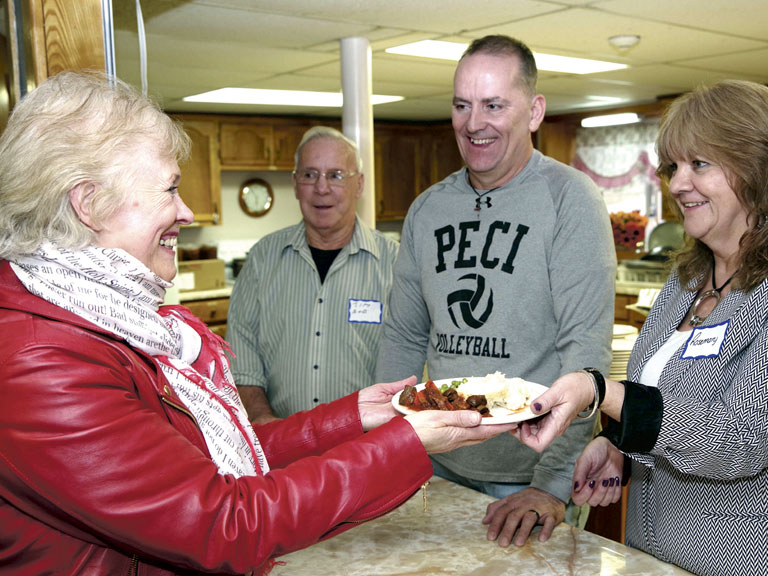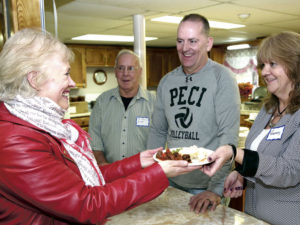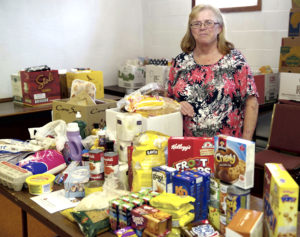County News
Food insecurity in PEC

Coordinated effort underway to find solutions
The Vital Signs Report of 2013 identified three key areas of concern for the County: transportation, youth education and food insecurity. Since that time, a collective approach to transportation and youth education has resulted in advances being made in both areas. A pilot project to bring public transit to the County has received some significant provincial funding and is expected to begin sometime this year. The Greater Than project is a collaborative approach by a number of learning and education partners that aims to increase the high school graduation rate in the County. While there have been substantial efforts by a number of groups to address food insecurity, it has been until recently a somewhat piecemeal approach. That is in the process of changing, thanks to a grant from the Rural Ontario Institute (ROI) for a project to build a cohesive approach to food insecurity in the County. This project involves 25 organizations and has the goal of developing a system to remove the barriers that many people experience when it comes to accessing affordable, nutritious food in the County.

Donna Blakeney (L) accepts a plate of food from Rosemary Markland (R) during a community dinner at the HOPE centre in Picton, as volunteer Jim Brown (centre left) and Pastor David Inch look on.
Currently, County residents in need are served by three foodbanks, two based in Picton and one in Wellington. There are a number of organizations that offer free community meals, and the Community Development Council (CDC) of Quinte has the Good Food Box program, which provides lowcost fruits and vegetables at three pick-up locations. The food insecurity collective is looking to consolidate two of the three foodbanks—the Salvation Army foodbank will continue to operate independently— at a central location that will also include facilities for food storage and preparation as well as having space for community meals, and to better coordinate the services offered by other partners. The collective has three areas of focus: building public awareness of food insecurity, improving access to nutritious food, and improving education and building skills around food.
Tony Walton is a member of the collective and is on the team seeking to build public awareness of food insecurity. The Vital Signs Report states that about 10 per cent of the population in the County is food insecure. This translates to more than 2,000 people, yet fewer than half that number are served by the County’s foodbanks. “We know that people use the foodbanks, but we also know there’s a lot more people in the County that should avail themselves of these services but don’t, for various reasons,” says Walton. “Sometimes it’s a question of access, in terms of the time when the foodbanks are open. Sometimes it’s a question of dignity, where people don’t feel good to be in that position. What we’re interested in is not only getting information to the people, but also building engagement with them.” He notes that food insecurity is directly linked to poverty or low income, and that residents in those situations may not have ready access to a computer to get their information online, so his team is seeking alternate means of making people aware of what services and supports are available.
Glen Wallis of Food to Share is another member of the collective, and part of his team’s focus is to determine whether users of these food services have their own cooking facilities or even if they have to knowledge and skills to prepare nutritious meals. “There’s no point offering people frozen meals if they don’t have a freezer,” says Wallis. “Some people are limited to a hotplate and a kettle, very limited resources for cooking, so it’s important to recognize that and be giving out appropriate food to them.” One important consideration for the collective is to increase the amount of fresh fruits and vegetables that are given out. Food to Share was recognized as a Good Food Organization in 2018, and the Picton and Wellington foodbanks have embraced the same principles, which includes increasing the proportion of fresh food as well as getting the clients to actively participate.
“We will very soon be setting up cooking sessions where foodbank clients can come and help to cook, and then take home six or seven meals at the end of it. There would be no cost, and at the end they would get some prepared meals,” says Wallis.

Storehouse Foodbank volunteer Lisa Marquardt with a two-week supply of food for a family of four.
He is expecting that much of the fresh produce required for these sessions— and the additional fresh produce distributed to clients—will be paid for through the budget allocated by council. “We’re hoping to show council just how much impact that $20,000 has had, and I think they will be impressed that it goes to increasing the amount of fresh food that is distributed.”
For Walton, the work of the food insecurity collective is a welcome step in addressing a problem that many in the County are dealing with. “Food insecurity can hit anyone—an unexpected bill, the loss of a job, and then you have some pretty tough choices,” he says. “The nutritious food basket is not cheap in today’s market. Part of our challenge is to help people become educated about nutritious food, and that food has to be affordable. The fact is in this community you have precarious employment and you don’t always have a living wage. And we have not yet accepted that food is a right. Everybody should have, as a right, the proper food to eat.”
For more information about food access in the County, please visit hpepublichealth. ca/foodaccessguide and click on the box for Prince Edward County. For information about the food insecurity collective, please email foodtosharepec@ gmail.com.

Comments (0)